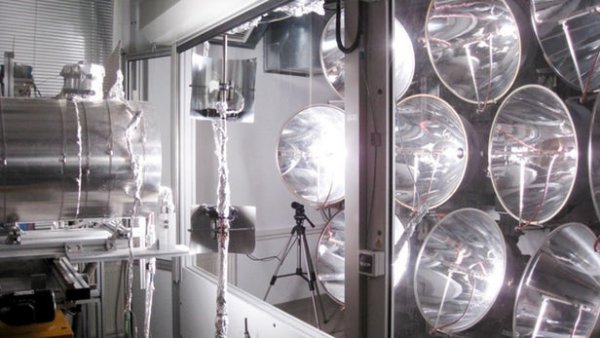The sun can provide an unlimited amount of energy, but there is a major drawback, that is, about half a day at night, solar-powered facilities and equipment must shut down or store additional energy, and this process has a centralized solar (CSP) power plant Particularly destructive. Now scientists at the German Aerospace Center have tested a solar reactor concept called CONTISOL. The concept also includes a thermal energy storage system for day and night operation. Although photovoltaic systems draw energy from light, CSP systems are able to extract heat from the sun. This usually takes the form of a facility consisting of a series of central tower receivers that reflect sunlight, which uses heat to trigger thermochemical reactions. This may involve converting water to steam to run the turbine or, with CSP participation, generate hydrogen by breaking down the water vapor into its constituents. For this reason, the reactor needs to reach temperatures between 800°C and 900°C (1472°F and 1652°F). When the sun shines, it's all fine, but nightly nights are dark for 12 hours and the system cools, wasting time and heat because the reactor must warm up every morning. The CONTISOL concept aims to solve this problem. During the day, the sun heated two cabins filled with air drawn from the outside. Once hot, the air in one chamber is sent into the reactor to trigger the thermochemical reaction to produce hydrogen while the other chamber only stores energy. Once the sun goes down, the system can pull hot air out of the storage chamber and continue to use it in the reactor. "The solar reactor encountered a problem in the past, that is what you do at night when you don't have the sun, or even no clouds," said Justin Lapp, the lead author of the paper describing the CONTISOL test run. "So CONTISOL's main idea is to combine two reactors. One is the direct chemical treatment of sunlight and the other is the storage of energy. In the chemical channel, the high temperature of the material drives the chemical reaction. The products in these channels will react. The cooling air in the air channel will be discharged to the front and the hot air will be discharged from the back. " To test the system, a team at the German Aerospace Center established a small prototype under the sun's heat. The device is capable of successful operation at a temperature of 850°C and a power of 5 kW. Overall this is quite low, but the goal is to test the feasibility of the reactor and this will be expanded for commercial use. 270W Solar Panel,270 Watt Solar Panel,275W Solar Panel,280W Polysilicon Solar Panel Zhejiang G&P New Energy Technology Co.,Ltd , https://www.solarpanelgp.com